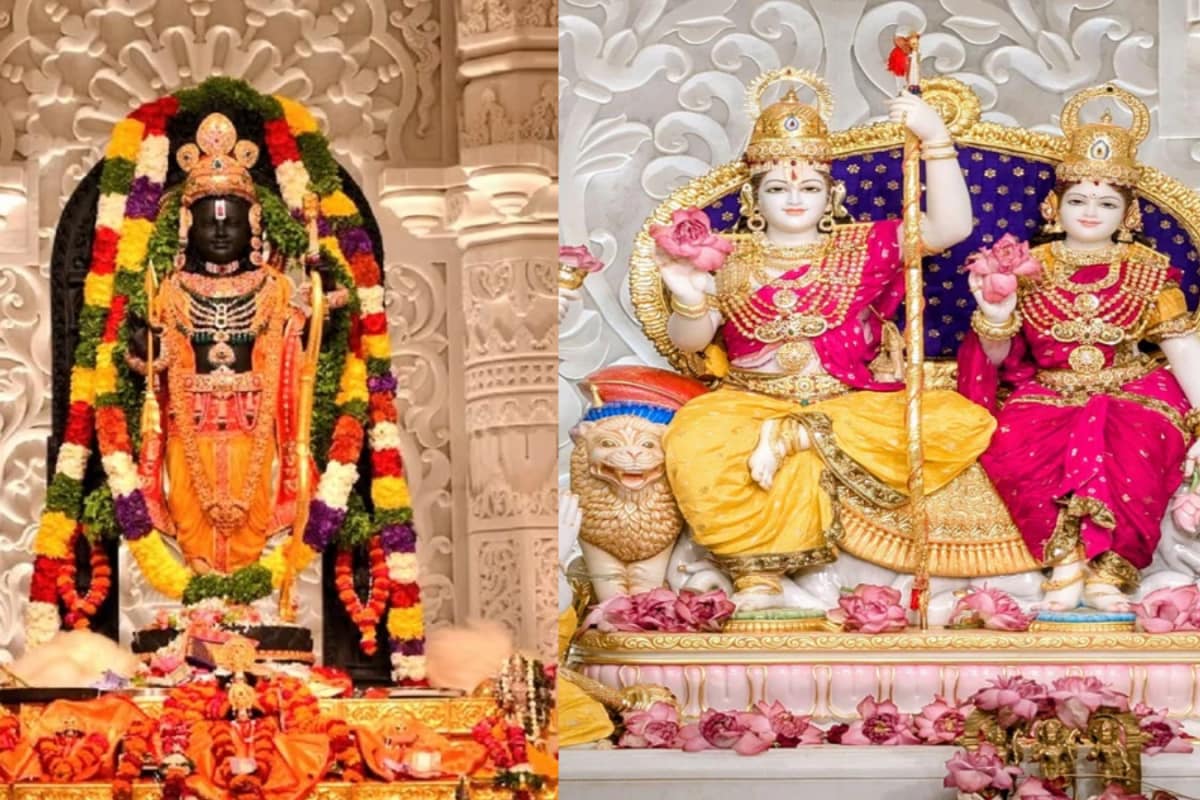

The Ayodhya Ram Temple, a symbol of faith and architectural grandeur, has incorporated 45 kilograms of pure gold, estimated to be worth ₹50 crore (excluding taxes), into its structure. This precious metal has been predominantly used to embellish the doors on the ground floor of the temple and the throne of Lord Ram. The ongoing gold work in the Sheshavatar Temple signifies a continued commitment to enriching the temple's splendor.
Nripendra Mishra, the chairman of the Ram Temple Construction Committee, confirmed the extensive use of gold. While the main structure of the Ram Temple is now complete, work continues on other facilities, including a museum, auditorium, and guesthouse, with an expected completion date of December 2025.
Following the consecration of the Ram Darbar, authorities are implementing controlled public access to the sacred space. Currently, only a limited number of devotees are permitted to visit the Ram Darbar, and entry is regulated through free passes. Champat Rai, the general secretary of the Temple Trust, has urged devotees to remain patient and await their turn to visit. A trust official clarified that unrestricted public access to the Ram Darbar is not yet available.
The use of gold adds to the already significant construction costs of the Ram Temple. As of March 2025, the Shree Ram Janmabhoomi Teerth Kshetra Trust had spent ₹2,150 crore on the temple's construction and related projects since its formation on February 5, 2020. This figure includes ₹396 crore paid in taxes, cess, and service charges, with ₹272 crore specifically for GST payments to the government. The Trust received 944 kg of silver from devotees, approximately 92% pure. A large portion of the expenditure, ₹1200 crore, was allocated to construction work.
The temple complex spans 70 acres, with the main temple covering 2.7 acres and reaching a height of 161 feet. The initial estimate for the temple's construction was ₹1,800 crore (approximately $220 million). However, some reports suggest that the final cost may reach ₹3,200 crore (approximately $400 million) due to additional features and unforeseen circumstances.
In preparation for the temple's inauguration, the first gold door was installed on the upper floor of the sanctum sanctorum in early January 2024. The door measured 12 feet high and 8 feet wide. The Uttar Pradesh Chief Minister's office announced plans to install 13 more gold doors in the following days. Out of the 46 doors to be installed in the Ram Temple, 42 would be coated with gold.
The construction of the Ram Temple has had a significant impact on Ayodhya and Uttar Pradesh. The Uttar Pradesh government has envisioned an investment of ₹85,000 crore for the redevelopment of Ayodhya, which will be implemented over ten years according to the Master Plan 2031. Tourist footfall in Ayodhya has already increased from 0.6 crore in 2021-22 to 2.3 crore in 2022-23, creating revenue and employment opportunities for local businesses.
The Shree Ram Janmabhoomi Teerth Kshetra Trust was formed by the central government in February 2020 to oversee the construction and maintenance of the Ram Mandir. The Trust collected ₹3,500 crore in donations, with ₹1,800 crore allocated for the temple's construction. In addition, ₹100 crore was allocated for 'Ramotsav,' a 70-day cultural event. The Trust also invested in a 'Time Capsule' containing a detailed history of the Ram Janmabhoomi, buried 2,000 feet beneath the Ram Mandir to avoid future controversies.